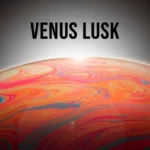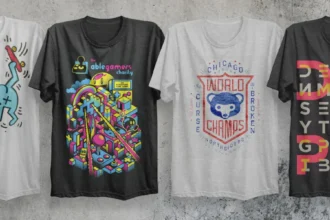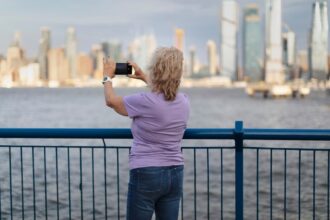Introduction to Jank Botejo
Jank Botejo is a name that has been making waves in the art world. This unique movement blends tradition with modernity, creating a captivating dialogue between past and present. But what exactly is Jank Botejo? What are its roots, and how has it evolved over time? As contemporary artists embrace this vibrant style, we dive deep into its essence through interviews with those who breathe life into it daily. Join us on this journey to uncover the layers of Jank Botejo—its history, influence, and future prospects as we explore the minds behind this dynamic artistic expression.
The Origins and Evolution of Jank Botejo
Jank Botejo has deep roots in the cultural landscape of its homeland. Emerging from a fusion of traditional practices and modern influences, this art form reflects a unique narrative.
Initially, Jank Botejo was an expression of local folklore and community stories. Artists sought to capture their heritage through vivid imagery and symbolism. Over time, it evolved into a more experimental medium.
The introduction of contemporary themes marked a significant turning point. Practitioners began incorporating global perspectives while retaining local essence. This blend enriched the storytelling found within each piece.
Today, Jank Botejo continues to thrive as artists push boundaries. They explore new materials and techniques that resonate with diverse audiences. The evolution is ongoing, showcasing adaptability in both style and substance across generations.
Key Figures in the Jank Botejo Movement
The Jank Botejo movement has been shaped by several influential figures. Each artist brings their unique perspective, adding depth to the genre.
One prominent name is Aiswarya Patel. Her vibrant use of color and abstraction pushes boundaries. She often explores themes of identity, drawing from her cultural background.
Then there’s Ravi Singh. Known for his intricate layering techniques, he captures emotions in a way that resonates with viewers deeply. His commitment to social commentary sets him apart.
We have Nia Chen, who blends traditional methods with modern influences seamlessly. Her work speaks volumes about the evolution of art in contemporary settings.
These key figures not only define Jank Botejo but also inspire future generations to explore new artistic horizons. Their contributions create a dynamic dialogue within the movement, ensuring its relevance today and beyond.
Themes and Techniques in Jank Botejo Artwork
Jank Botejo artwork captivates audiences with its distinct themes and innovative techniques. At the heart of this movement lies a celebration of cultural identity. Artists weave narratives that reflect personal experiences and collective histories.
Color plays a crucial role in Jank Botejo. Vivid hues often symbolize emotions, drawing viewers into the artists’ worlds. Texture is equally important; layered materials create depth, inviting tactile exploration.
The incorporation of traditional motifs alongside modern elements showcases versatility. This blending pushes boundaries and challenges perceptions about contemporary art.
Techniques such as mixed media are prevalent, allowing for experimentation. Digital tools also find their place, merging past practices with new technologies to redefine artistic expression.
Each piece serves as a dialogue—a conversation between artist and observer—inviting reflection on society’s complexities through unique visual language.
Impact of Jank Botejo on Contemporary Art Scene
Jank Botejo has carved a niche for itself in the contemporary art landscape. Its vibrant colors and bold themes resonate with a diverse audience, sparking conversations around identity and culture.
This movement challenges traditional boundaries, encouraging artists to explore personal narratives through innovative techniques. The fusion of traditional styles with modern elements creates an engaging dialogue within the art community.
Exhibitions featuring Jank Botejo works attract attention from collectors and critics alike. This growing interest fuels collaborations across various artistic disciplines, enriching the creative environment.
Moreover, Jank Botejo inspires emerging artists to embrace their unique voices. It cultivates a sense of belonging while pushing them to experiment fearlessly.
As galleries increasingly showcase this dynamic movement, its influence will likely expand further into mainstream art dialogues. The conversation surrounding Jank Botejo is only just beginning to unfold.
Interviews with Practitioners of Jank Botejo
Engaging with contemporary practitioners of Jank Botejo offers a fascinating glimpse into its dynamic evolution. Artists passionately share their interpretations and experiences, revealing how they connect deeply with this vibrant movement.
One artist spoke about the significance of color, emphasizing how each hue tells a story. The emotional resonance behind every stroke is palpable in their work. Another practitioner highlighted the importance of community collaboration, showcasing how collective efforts breathe life into individual artistic visions.
These interviews often transcend mere technique; they explore personal journeys through creativity. Each artist expresses a unique narrative woven within the fabric of Jank Botejo, enriching our understanding further.
Their insights illuminate not just what it means to create but also why it matters—sharing perspectives that resonate across cultures and generations. This dialogue encapsulates the spirit of innovation that drives Jank Botejo forward today, making it more relevant than ever in today’s art scene.
Future of Jank Botejo: Predictions and Speculations
The future of Jank Botejo is a tapestry woven with threads of innovation and cultural evolution. As contemporary artists continue to explore new mediums, we might witness an intriguing fusion of digital art and traditional techniques.
Emerging technologies such as virtual reality could revolutionize how audiences experience Jank Botejo works. Imagine stepping into a 3D world where the artwork envelops you, creating immersive narratives that challenge perception.
Moreover, social movements may further shape this artistic style. Artists are increasingly drawing inspiration from global issues like climate change or social justice, infusing their work with urgency and relevance.
Expect collaborations across disciplines too—musicians, dancers, and poets joining forces with visual artists to create multifaceted experiences. The essence of Jank Botejo will likely evolve but remain rooted in its core values: creativity and connection.
Conclusion: The Enduring Legacy
The legacy of Jank Botejo continues to resonate within the art world. Emerging artists draw inspiration from its rich history and innovative techniques, while seasoned practitioners find new ways to evolve their practice in response to this dynamic movement.
As contemporary creators engage with themes rooted in Jank Botejo, dialogue around identity, culture, and emotion flourishes. Each brushstroke or sculpted form tells a story—a connection between past influences and future aspirations. This blend of tradition and modernity keeps the spirit of Jank Botejo alive.
In galleries across the globe, exhibitions dedicated to Jank Botejo captivate audiences. The artwork invites viewers into an immersive experience that challenges perceptions and ignites discussions about what it means to be an artist today.
With every new piece created under its influence, the movement strengthens its foothold in contemporary art. As we look ahead, it’s clear that the journey of Jank Botejo is far from over; rather, it stands poised for further exploration and discovery—its enduring impact a testament to creativity’s boundless potential.

















